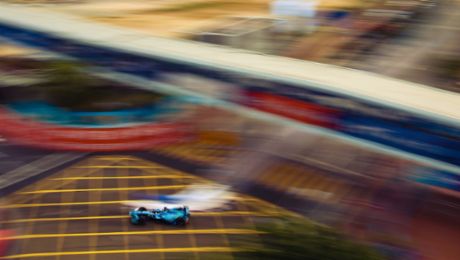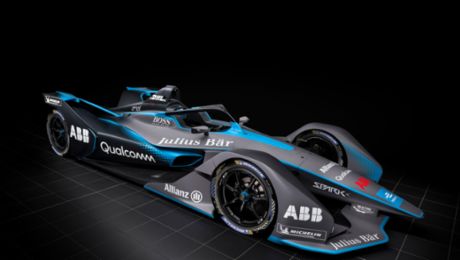How many hamburgers did he have to sell to buy a set of tires for his go-kart back then? Neel Jani thinks for a minute. Numbers and thought experiments have fascinated him since early childhood. He and his wife, Lauren, are sitting in the Jack & Joey burger restaurant in Mantes-la-Jolie, a good fifty kilometers northwest of Paris. Neel recalls helping out at his parents’ quick-service restaurant at the age of thirteen, before growing up and becoming a race-car driver. The mention of go-karts reminds him of his last kart race, and he replays in his mind what it was like to sit just a few centimeters above the road, find the line, brake, and steer as little as possible to minimize wear on the parts. Then he looks up and is back in the present. The lunch break is over. He and Lauren get ready to leave. The new Porsche 911 Carrera S Cabriolet is waiting outside.
The couple started in Paris; their destination is Rouen. They have about ninety kilometers to go from Mantes-la-Jolie to the capital of Normandy but will need a few hours for this extended trip back into the future, hot on the trail of where it all began 125 years ago. Automotive history. The birth of motorsports.
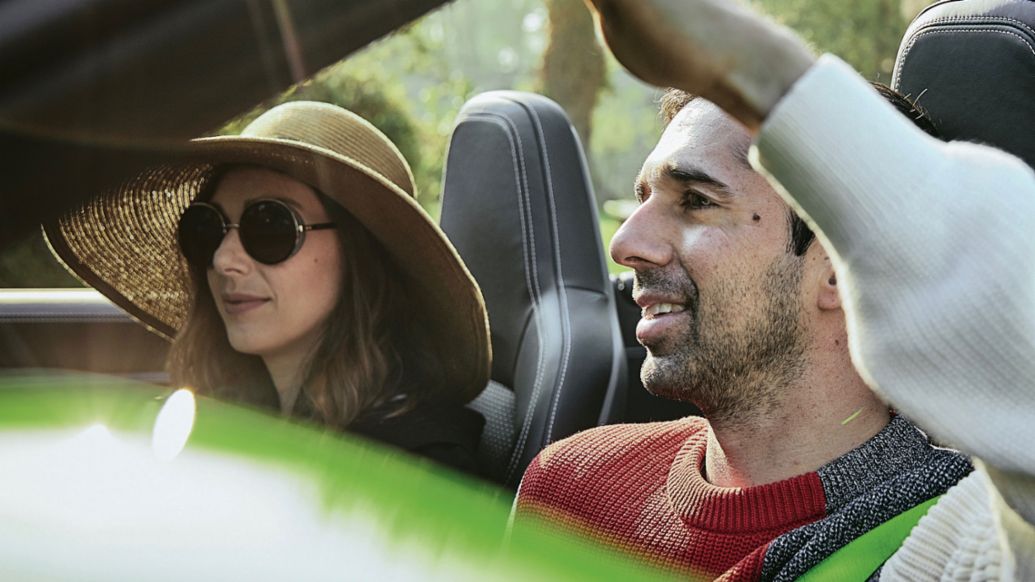
In December of 2019, Porsche’s new Formula E factory team with Neel Jani at the wheel will enter the sixth season of the ABB FIA Formula E Championship. A native of Switzerland and a Porsche factory team member since 2013, Jani is the first driver whom the Stuttgart-based sports-car company has signed for this series. The thirty-five-year-old is a man of speed and experience in the Formula E, a development driver with an established record in this technologically pioneering racing program. With the Porsche 919 Hybrid, he and his team won first place overall in Le Mans as well as the FIA World Endurance Championship in 2016. Jani drove to four victories, nine pole positions, and four top lap times from 2014 through 2017 with the 919. In Belgium’s Spa-Francorchamps in 2018, he drove the 919 Hybrid Evo to a new track record that made Lewis Hamilton’s best time in the Formula One look rather tame.
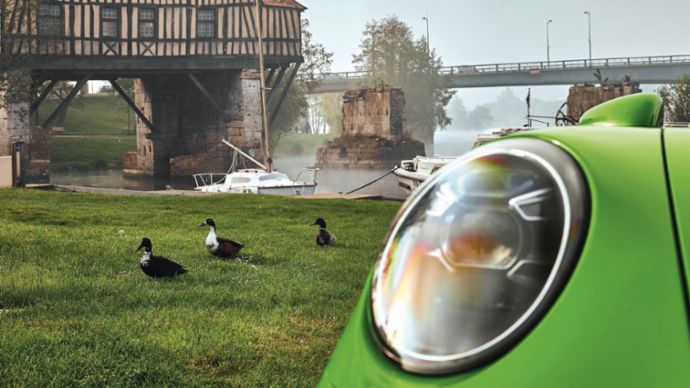
Right now in France, Jani has taken a break from his arduous test program to take a drive that merges the past, present, and future. It began on Boulevard Maillot in northwestern Paris. That’s where the first organized car race in history started, on July 22, 1894: Paris-Rouen, “a competition for horseless carriages,” initiated by Pierre Giffard, editor-in-chief of the Parisian newspaper Le Petit Journal, who wanted to show that the future would belong to cars. More than one hundred drivers signed up, and twenty-one vehicles passed the technical inspections. Their engines were powered by gasoline, steam, or gas, and some of them even had electric drives—which were expressly desired. Monsters weighing tons competed with lightweight three-wheelers, delivery trucks and buses with delicate gasoline-powered vehicles. According to the announcement, the prize money of 5,000 francs would go not to the fastest driver but rather to the one who presented the least dangerous, easiest to operate, and least expensive vehicle. The flag dropped in Paris at 8:01 in the morning. Twelve hours were scheduled for this reliability contest that would end 126 kilometers away at the Esplanade du Champ de Mars in Rouen. Seventeen contestants arrived at the destination—dust-covered, drained, and exhausted.
“Back then, the goal was to arrive. What we’re after today is efficiency.” Neel Jani, Formula E driver
“We can’t even begin to imagine what that race was like for both the people and the cars,” says Jani. “And today we have no idea how we’ll be getting around 125 years from now. One thing is certain: it won’t have anything to do with cars as we know them now. Back then, they wanted to show that a vehicle could cover more than one hundred kilometers. The goal was to arrive. What we’re after today is efficiency.”
Jani starts the engine of the 911 Carrera S Cabriolet. He can’t follow exactly the same route from Paris to Rouen because the raised gravel tracks of 1894 have given way to freeways and country roads. The enormous strength and endurance needed for the drive back then and the accompanying pioneering spirit are also hard to replicate when sitting in the latest 911: the eighth generation of an iconic car, the greatest of its kind, and the most innovative of the present time. It generates 331 kW (443 hp) and, with the optional Sport Chrono package, needs only 3.7 secondes to go from 0 to 100 kmh; its peak speed is a good 306 kmh. Back in 1894, the average speed on the drive from Paris to Rouen was 17.5 kmh.
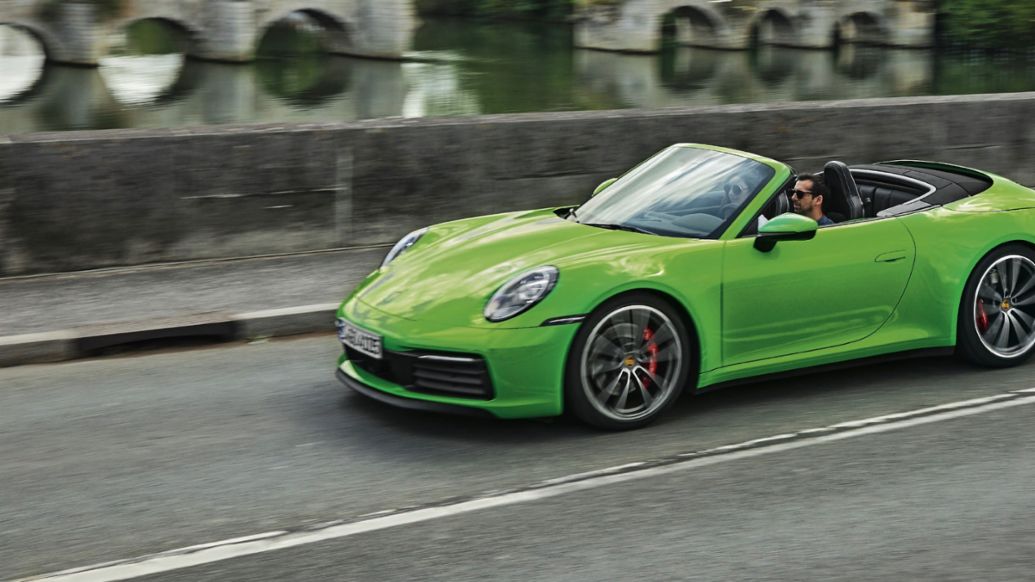
Just a few days ago, Jani drove his last race (for now) in Le Mans for the FIA World Endurance Championship. “If Porsche gives you the chance to be the first driver in the brand’s history to enter the Formula E with its factory team, you have to set your priorities,” he remarks. He’s looking forward to the Formula E but has great respect for it. For the power density of the cars, for the hand-picked drivers, for the courses. The Formula E is held where electric cars will be used in the future—in urban centers and metropolitan areas around the world. Races on the streets of megacities have a special flair. They come to the people, not the other way around.
Porsche will be the only team to start at square one next season. Moreover, the Formula E is the first racing series for which Porsche is not entering a car completely of its own making. Eighty percent of the parts of each race car in this series are identical. But developments are allowed on all of the drive components, such as the electric motor, inverter, transmission, rear-axle suspension, and software. Fine adjustments make the difference between victory and defeat. And sometimes a little luck as well.
“Our Formula E race car is ready,” says Jani. “With the upper limit of fifteen test days and many hours on the simulator, it’s now down to the details.” The goal is not only a perfect vehicle setup, but also a detailed energy management plan. Expectations are high, and Jani is confident. A place on the winners’ platform should be in the cards, he thinks. Like three years ago, when he, Romain Dumas, and Marc Lieb won the 24 Hours of Le Mans for Porsche. “You can’t win Le Mans,” he says. “Le Mans lets you win—or not.”
Eleven consecutive years in Le Mans have given him a lot to draw on when he goes to the Formula E—“especially patience.” He drives to Mantes-la-Jolie, where the participants had their ninety-minute midday break 125 years ago, around three hours after the start in Paris. Lauren and Neel look at some photos. When he was asked a few years ago about his plans for a family, he replied, “First I’d like to win Le Mans, then I’ll think about kids.” Then came his son. And now the Formula E is on its way.

The Porsche turns left onto a short gravel road. High, dense hedges block the view of the parks and Bizy Castle in Vernon. The Janis are welcomed and allowed to park the Porsche 911 in the courtyard. The building is a protected historical monument, once known colloquially as the “little Versailles of Normandy.”
“It’s the driver who makes the difference.” Neel Jani
They reach their destination at dusk: Rouen, a city of one hundred steeples, a Gothic cathedral, narrow lanes that hark back to the Middle Ages. National heroine Jeanne d’Arc was burned at the stake on its marketplace in 1431, and the site is marked. But not much time remains for sightseeing. The Janis made too many stops along the way as they enjoyed the day and the freedom offered by the cabriolet. They pulled over along the Seine, visited an old mill, took photos of bridges, and watched parts of Rouen’s twenty-four-hour motorboat race. But Jani still won’t say how many burgers he had to sell for a set of go-kart tires twenty-two years ago. So a different question is posed: where will Porsche stand at the end of its first Formula E season in 2020? “Eight different drivers have won the first eight races of the season right now,” he says. “So much of the technology is the same that it’s the driver who makes the difference.” Jani gets out and walks to the fountain on the Esplanade du Champ de Mars. He turns around and smiles. “I’ve never entered anything in my life that I didn’t intend to win someday.”
„Inside E“ Episode 1: Interview with Neel Jani
Info
Text first published in the Porsche customer magazine Christophorus, No. 391
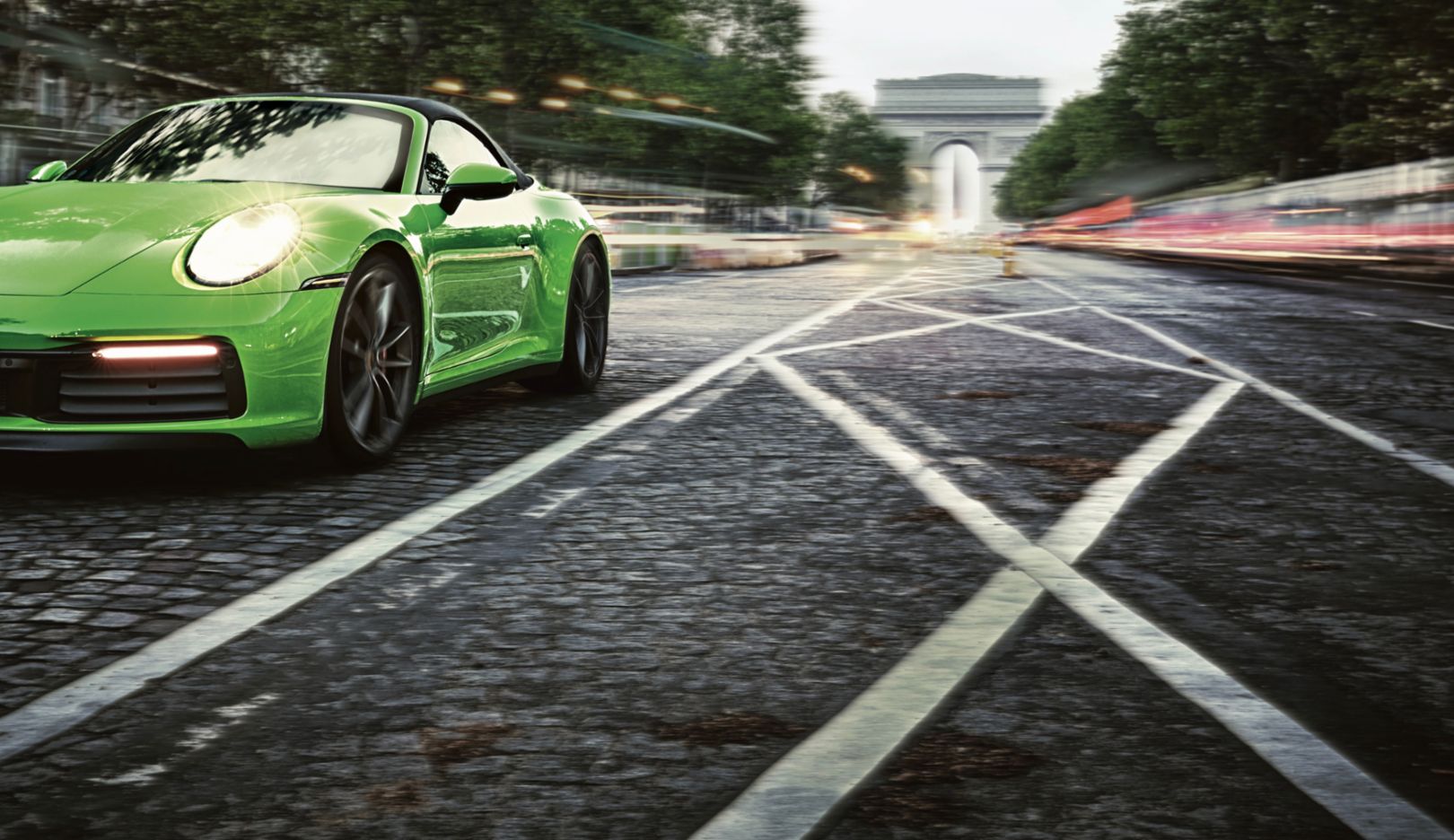
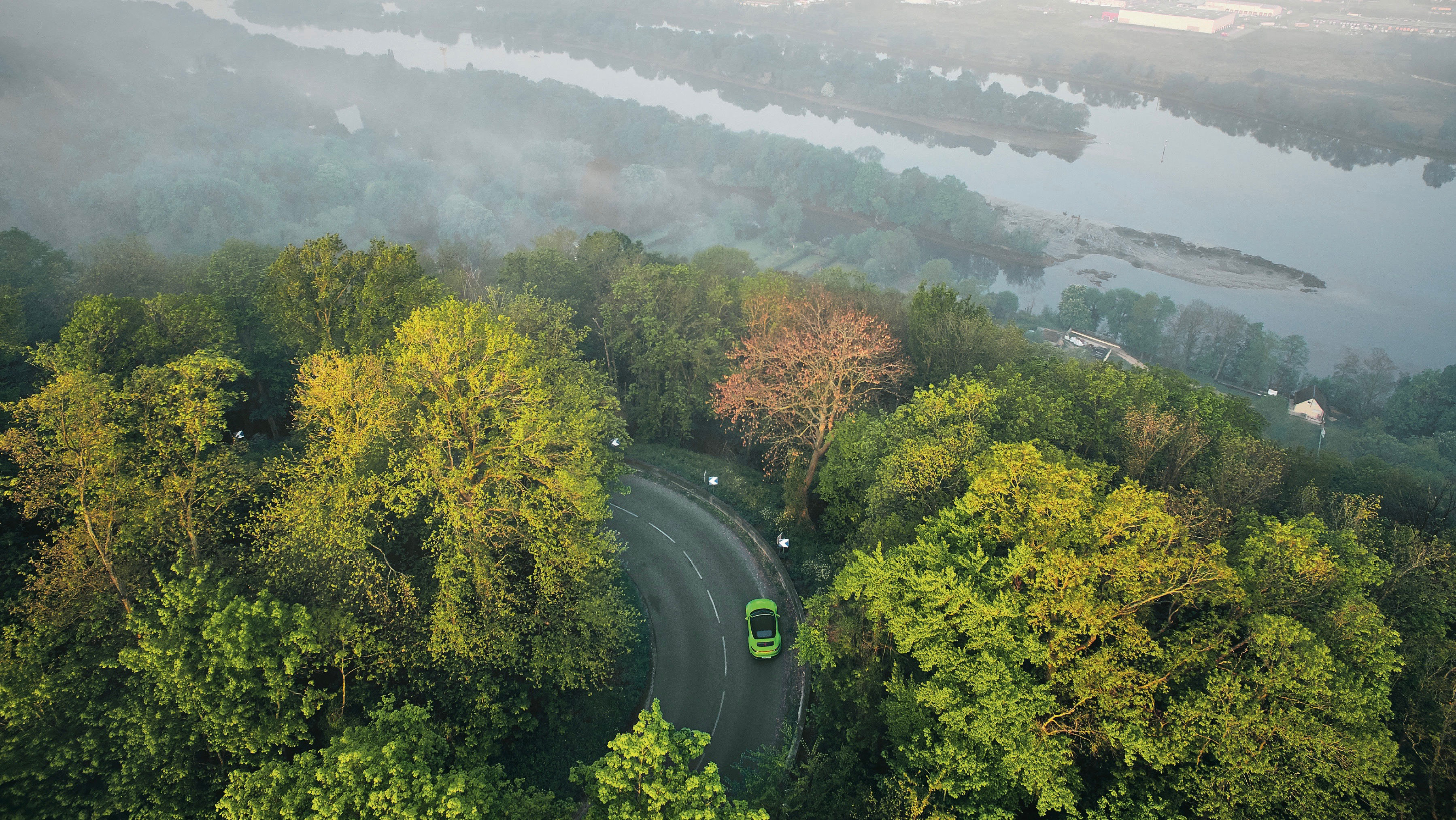
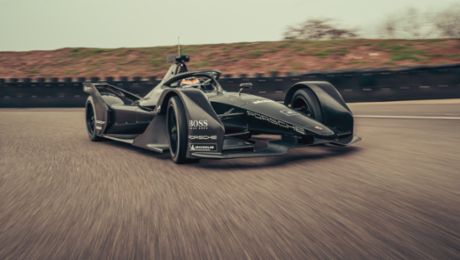
.jpg/jcr:content/b-Neel-Jani-(CH).jpg)
